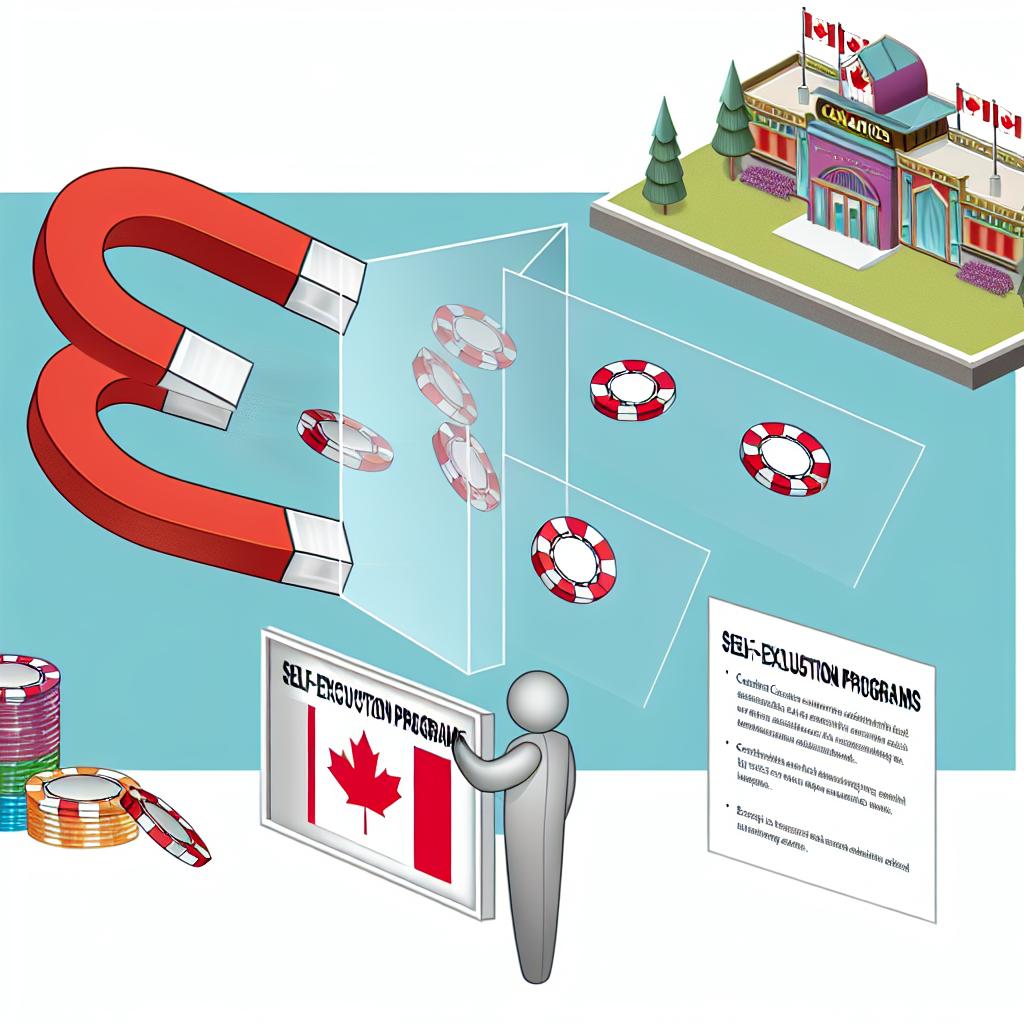The Concept of Self-Exclusion in Canadian Casinos
In the sphere of gaming and gambling, self-exclusion programs have emerged as essential tools designed to enable individuals to voluntarily exclude themselves from gambling venues and platforms. Predominantly, these programs aim to support those who acknowledge having a gambling issue and seek a structured and responsible method to manage their behavior effectively.
How Self-Exclusion Works
Self-exclusion initiatives in Canadian casinos are not just simple in execution but profoundly impactful. When an individual chooses to enroll in such a program, they agree to refrain from entering casino premises or engaging in any form of gambling for a predetermined period. This period varies significantly, typically ranging from six months up to several years, contingent on the choice of the individual involved.
Upon finalizing a self-exclusion agreement, various enforcement mechanisms spring into action. Casino staff are meticulously trained to monitor casino visitors and identify individuals enrolled in the self-exclusion program, ensuring these individuals do not gain access to gambling services. Additionally, technological advancements such as facial recognition systems often assist in ensuring that self-excluded individuals are accurately identified, thereby enhancing the program’s integrity.
The Legal Framework
In Canada, the gambling landscape is delineated by regulations established at the provincial and territorial levels. This decentralized approach ensures that self-exclusion programs manifest differently across the country, reflecting regional policies and strategies. These programs are typically woven into broader responsible gambling strategies. For instance, in Ontario, the Ontario Lottery and Gaming Corporation (OLG) orchestrates the self-exclusion program, offering individuals a clear path to exclude themselves from participating in gambling activities. More detailed information about these processes can be found through resources available on the OLG website.
Effectiveness and Challenges
The effectiveness of self-exclusion programs represents a focal point of continued research and scrutiny. From one perspective, such programs constitute a proactive resource for those seeking assistance, granting them empowerment to regulate their gambling habits autonomously. Conversely, the success of these programs heavily relies on both the individual’s commitment to the self-imposed restrictions and the rigorous enforcement of the exclusion by the casino.
An intriguing challenge confronting these programs is the risk of individuals circumventing bans at land-based casinos by switching to online gambling platforms. Recognizing this gap, several provinces have started extending self-exclusion options to online platforms. By doing so, they aim to cover a broader array of gambling avenues, seeking to provide more comprehensive support to individuals facing gambling challenges.
Conclusion
Self-exclusion programs form an integral pillar within the responsible gambling landscape in Canada. By creating an avenue for individuals to assume control over their gambling behaviors, these programs offer a structured path towards better personal management. Nevertheless, achieving continuous improvements in the implementation and supervision of these programs remains imperative to ensure they effectively deter compulsive gambling tendencies. Individuals contemplating participation in a self-exclusion program are advised to consult their respective provincial gambling regulatory bodies for detailed guidance and assistance. This collaborative and proactive approach is key to fostering a responsible gambling environment across Canada.
Self-exclusion programs have a rich history rooted in the concept of giving control back to the individual. In many respects, these initiatives symbolize a self-directed commitment to behavioral change, supporting those dealing with gambling addiction or problem gambling behavior. Participation in such programs involves a formal agreement where the individual voluntarily agrees to distance themselves from environments that facilitate gambling. This accords them a period for introspection and reduction of temptation.
Once enrolled, individuals might face emotions ranging from relief to anxiety, particularly if gambling has been a significant aspect of their lifestyle. Recognizing these emotional responses is part of the journey, highlighting the need for additional support systems. Therefore, it is crucial for casinos and regulatory bodies to offer complementary services such as counseling and financial advice, which can aid individuals during their self-exclusion period.
While technology has advanced to support the identification of self-excluded individuals, its implementation must be balanced with privacy considerations. Facial recognition and other identification technologies facilitate effective monitoring but must comply with privacy laws and ethical considerations. Ensuring that personal data is handled responsibly, with necessary protections in place, remains a central issue for programs relying on technological enforcement methods.
Furthermore, cultural and societal perceptions of gambling play a role in the effectiveness of self-exclusion programs. In provinces where gambling is deeply rooted in the social fabric, these programs face unique challenges. Enhancing public awareness and acceptance of self-exclusion requires tailored education efforts, highlighting the importance of responsible gambling practices.
One of the advantages of self-exclusion programs is their adaptability and potential for integration with emerging trends in gambling. As online gambling grows in popularity, these programs must evolve to address new patterns of gambling behavior. Proactive measures, such as extending self-exclusion to cover digital platforms, illustrate a commitment to comprehensive protection across individualized gaming environments.
To conclude, the success and efficacy of self-exclusion programs depend on a multi-faceted approach that includes effective regulation, technological innovation, community support, and continued oversight. By fostering a culture of responsibility and offering robust support mechanisms, Canadian casinos and regulatory bodies can ensure that self-exclusion programs contribute significantly to the health and wellbeing of individuals struggling with gambling-related problems.
Stakeholders at all levels, including policymakers, casino operators, social workers, and the gamblers themselves, have a role in shaping these initiatives. This collective responsibility emphasizes the importance of collaboration and continuous dialogue in addressing the challenges and opportunities present within the landscape of self-exclusion in Canadian casinos.
This article was last updated on: June 3, 2025

